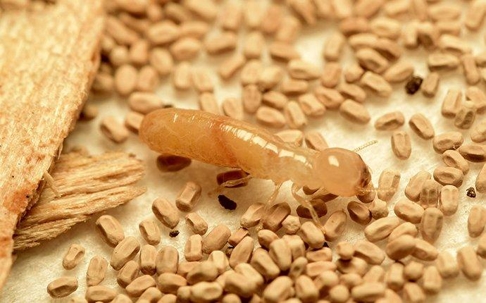Termites are one of the most dangerous and difficult pests globally. Infamous as silent destroyers, these prolific social insects infest homes in vast numbers, eating away at the internal structure of homes while going entirely undetected until the damage is pervasive.
Don't underestimate these pests- there's no sugar-coating the property damage they can cause. Termite control is crucial. Whether you're worried about a termite infestation in your home or want to protect yourself from the possibility, we can help. Here, we'll outline everything you need to know about one of the most common types of termites, including how to accurately identify them and deter them before it's too late. Read on to learn the key to successful pest control in the Bay Area.
Drywood Termite Habits and Behavior
The key to avoiding termite damage is identifying an infestation before it starts. Drywood termites are highly elusive; you can protect your property from these destructive pests once you know what to look for.
Named after their preferred food choice, drywood termites target the dry wood found in many homes. They serve an essential role as decomposers and as food for other animals in the wild, but when a colony becomes large enough to expand, their winged swarmers can sometimes land near people's homes. They usually swarm in the spring or summertime, and once they find a suitable tract of wood, they'll waste no time establishing their new colony. Termites eat wood, and they constantly eat – which makes it imperative to protect your home from their hunger.
Little Known Signs Of Drywood Termites
Quick, accurate termite identification is of the utmost importance if you want to protect your property. These pests are infamous for inflicting extensive property damage entirely undetected until it's too late; you can stop them from destroying your home. with the proper knowledge. Here are a few subtle signs of an infestation:
- Wood that sounds hollow when tapped
- Suddenly ill-fitting doors or windows
- Loose tiles or creaky floors
- Sagging walls
- Tiny holes dotting wooden structures
- Shed wings littering your property
- Any actual termites whatsoever spotted on your property
The signs of an infestation are notoriously subtle, so be watchful. Any wooden debris around your yard could harbor a termite colony ready to expand into your home, so keeping your property clean and clutter-free can help protect your home. But what should you do if they're already inside?
How Often Should You Treat A House For Drywood Termites?
If you notice any signs of a termite infestation on your property, you should immediately contact the professionals for drywood termite treatment. However, preemptive treatment plans are an easy, effective, intelligent, protective measure. Preventative treatments for drywood termites should regularly occur around their most active swarming periods, spring and summer. Treatments can last up to 10 years, depending on the method and product used. A termite control specialist can work with you to meet your home's individual needs.
Action Plan For Treating Drywood Termites In The Bay Area
Although termite control is a challenge, there are a few things you can do to protect your property. Here's your action plan for drywood termite treatment and prevention:
- Eliminate organic debris around your yard
- Eliminate excess moisture
- Seal cracks and crevices around your home's exterior
- Install door sweeps and window screens
- Partner with a professional
You should never ignore a termite problem. Whether you're dealing with an infestation or want to protect yourself from the possibility, the best option will always be to partner with a pest control professional. Our experts at Bay Pest Solution Inc are here to help. Call now to schedule your inspection, and our team of trained technicians will take care of the rest.

